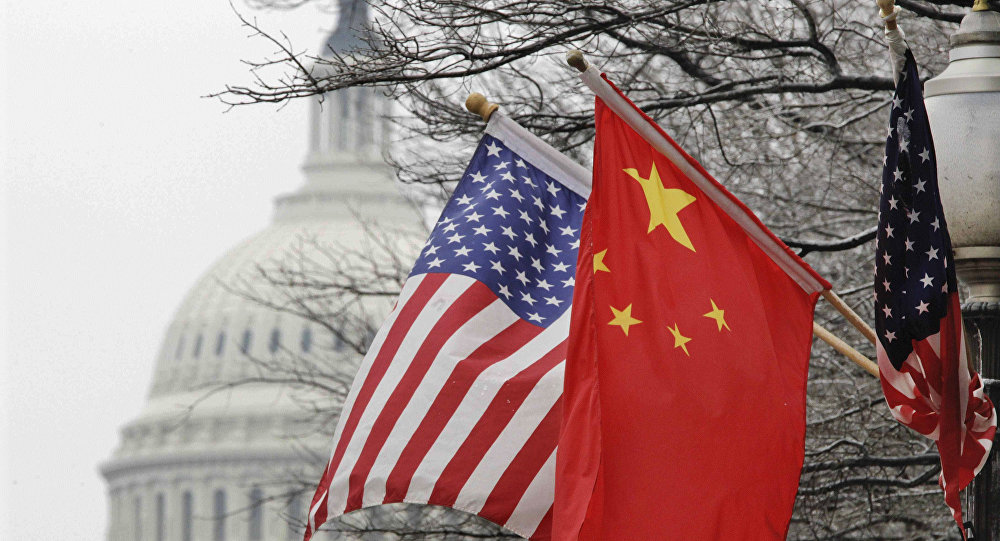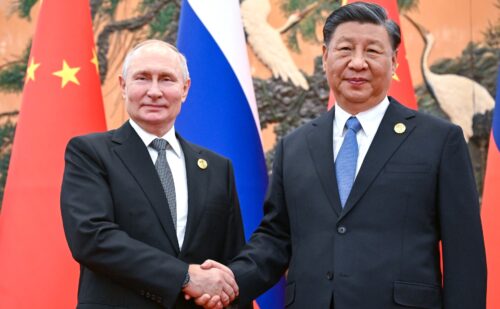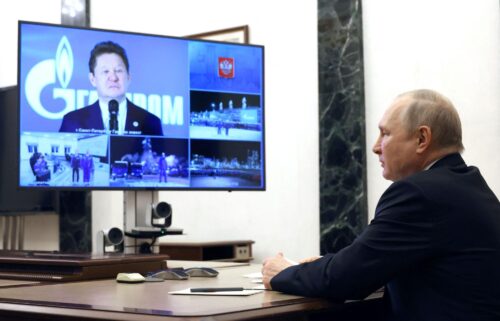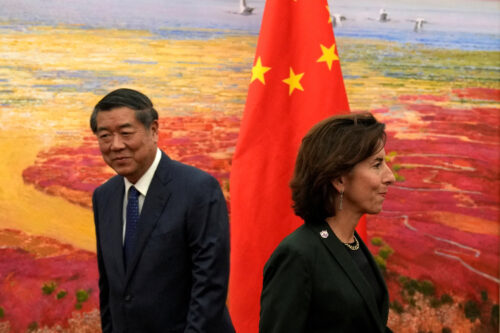In dealing with China, the U.S. can draw on a Cold War lesson: Be more open

For the U.S., the balance between openness and innovation with restrictions and control has always been essential.
In its current techno-feud with China, it risks getting that balance horribly wrong.
In popular imagination, America’s edge has always come from technology. From the cotton gin to the telegraph to landing on the moon, Americans are used to believing that inventing transformative technologies is a defining national strength.
Recently, though, China has seriously shaken America’s techno-confidence. Rampant espionage and intellectual property theft combined with Beijing’s stated intention, as expressed in its “Made in China 2025” strategy, to dominate emerging fields like artificial intelligence has caused commentators like Kai-Fu Lee to warn that China is out-innovating the United States. In response, U.S. policymakers have adopted a siege mentality — much of the Trump Administration’s official justification for launching its current trade war with China relies on the Made in China policy, and officials are busy clamping down on collaboration between U.S. and Chinese researchers. But the great techno-freakout of the past two years is hardly America’s first crisis of technological confidence. And the last one, a long battle for technological supremacy with the Soviet Union during the Cold War, shows that America’s real advantage has less to do with technology itself than with its culture of openness and innovation. It also suggests the best response is to double down on integration, rather than trying to cut ties with the world’s second-largest economy.
In 1957, the Soviets unexpectedly launched Sputnik, the world’s first artificial satellite. Though it could do little more than issue an ominous beeping sound to ground-based radio stations as it passed overheard, it struck fear into the hearts of Americans, many of whom worried it could be used to deliver nuclear weapons. U.S. leaders, meanwhile, were concerned by the satellite’s 184-pound payload, over five times that of America’s first planned satellite. In response, Washington poured money into science and engineering, passing the National Defense Education Act and establishing NASA just a year after Sputnik’s launch. Over the next few years, investment in research and development grew by some 10 percent annually — a pace equaled only by China. And while in subsequent decades the Soviets proved to be a worthy technological rival, they never again gained the upper hand over the United States when it came to developing and commercializing advanced technology. In large part, this was because the U.S. focused on doing what it does best: promoting a culture of open knowledge sharing and experimentation.
As the Cold War deepened and America’s technological edge grew more apparent, the Soviet Union turned to espionage and intellectual property theft to attempt to close the gap — closely resembling the case of China today. Rather than trying to batten down the hatches and wall off American research and development, U.S. officials responded not by cutting America off from the world, but by carefully weighing the costs and benefits of greater restrictions. In the late 1980s, Congress grew so concerned that pervasive Warsaw Pact espionage was reducing America’s technological edge that it commissioned a special report on technology transfer.
But instead of advocating tighter controls, the report instead warned that U.S. policy was “in danger of overcorrecting,” and advised that Washington carefully weigh the costs and benefits of restricting technology transfers. Instead of adopting more stringent controls across the board, the report concluded that the U.S. should focus on strengthening export controls on a small number of critically important technologies. These technologies, which the report called “keystone technologies,” included process control equipment that could conceivably unlock entire industrial processes. On the other hand, the report also stressed the need to keep technology transfer processes open enough that they help promote the economic vitality of allied countries. As the report observed, “It is essential to the national security interests of the United States, for both military and trade reasons, that the economies of these countries remain strong.” The history of U.S.–Soviet technological competition suggests that America’s current techno-feud with China risks getting this balance horribly wrong.
Indeed, the momentum seems to be behind a much more extreme and restrictive stance on U.S.-China technological collaboration. Of late, the commentary in the U.S. has increasingly tended toward “decoupling” — the idea that America should effectively disentangle its economy from that of China. Last month, in a New York Times op-ed, two prominent conservative think tank scholars advocated decoupling as a response to pervasive Chinese espionage and intellectual property theft. But the legacy of Cold War technological competition shows that it’s possible for America to maintain an edge in research and development without adopting draconian restrictions — which may even serve to undermine trade and collaboration with the very allies America needs to counter China effectively.
A much better approach would be to focus on carefully targeted measures to protect core proprietary or classified technologies, and double down on openness in other areas. Measures like providing all U.S. graduate students in STEM fields with an automatic green card, increasing public investment in basic research, and strengthening the role of technologists in policy-making will do much more to help the U.S. compete with China in technology than raising tariffs or limiting Chinese student visas. President Obama once proposed many of these ideas as part of a plan to “win the future.” They’re still America’s best bet to compete with China.
Scott Moore is director of the Penn Global China Program at the University of Pennsylvania. He previously served as Environment, Science, Technology, and Health Officer for China at the U.S. Department of State.





